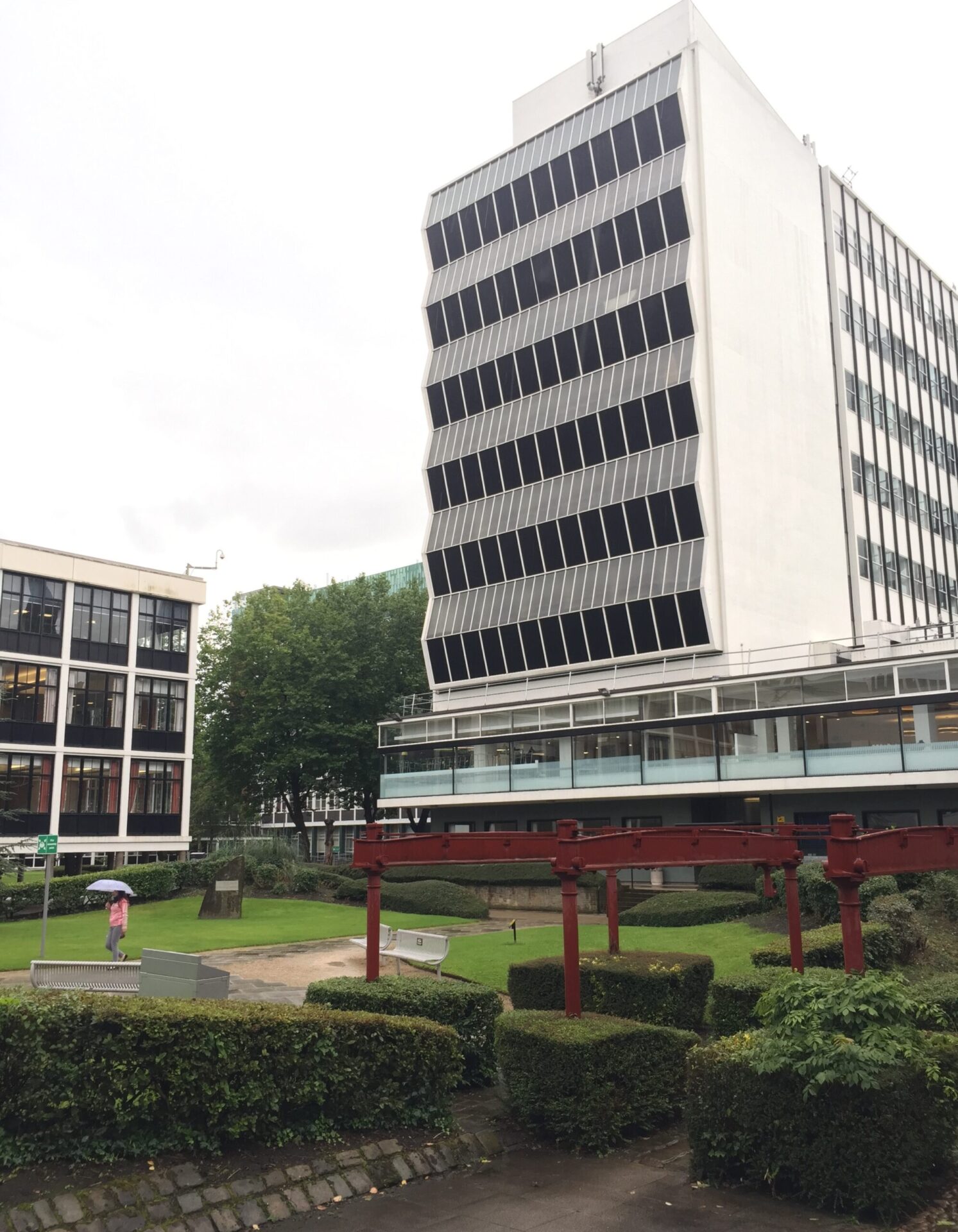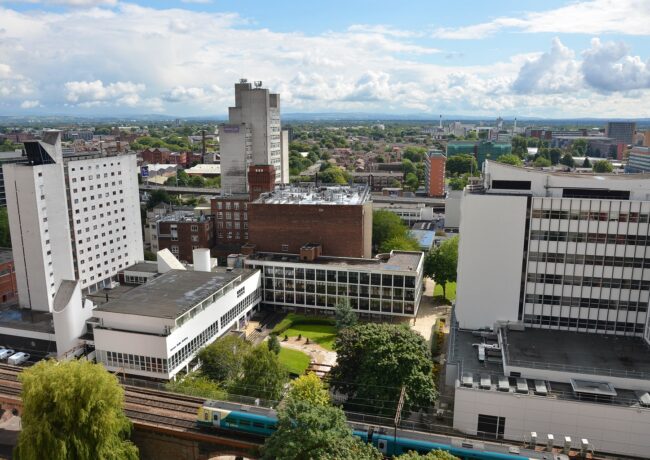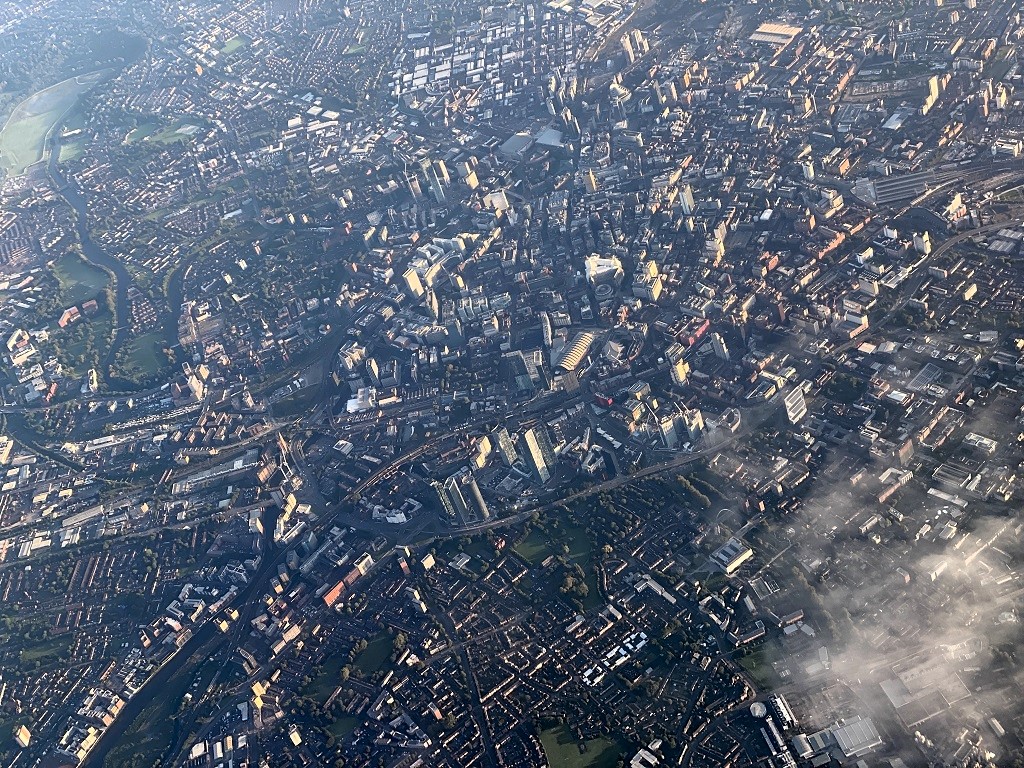University readies ‘international search’ for North Campus partner
The University of Manchester is preparing to launch its search for a partner to develop the North Campus site, formerly known as UMIST, into a “world-class innovation district”.
North Campus is a 29-acre site in the city centre, near to Piccadilly train station. It is currently occupied by the university’s engineering schools, which are due to move out in 2021 once the £330m Manchester Engineering Campus Development on Oxford Road is complete.
Working with its partner, the University said the mixed-use site will attract research, development, cultural and technology companies, as well as accommodating new residential space.
UMIST is much loved by architecture fans for its Brutalist and Modernist buildings, designed by Cruickshank & Seward. The site off Whitworth Street contains around 15 buildings, and their future is unknown; only the Victorian Sackville Building at the edge of the campus and railway viaduct through the centre are listed, and the 1960s buildings may or may not be retained.
A strategic regeneration framework drawn up by Bennetts Associates for the council last year drew criticism from campaigners including the Modernist and Twentieth Century Societies among others, who argued for the retention of the unlisted 1960s buildings, arguing they are as important to the built heritage of Manchester as listed Victorian structures.
After consultation, the council went as far as to say certain buildings have “medium significance” and “may have the potential to be retained and refurbished” but the viability of re-use will not be tested until detailed plans are drawn up. The key 1960s buildings include Renold and Pariser, and Jackson’s Mill which dates from the late 19th century.
According to the draft framework, the site could be used to create “a new hub for technology, learning, research and development”. The SRF described options that include:
- commercial and community buildings
- between 1,000 and 2,500 residential units
- 1.4m sq ft offices
- 130,000 sq ft retail and restaurant floorspace
- and up to 500 hotel rooms
The University will retain strategic and decision-making influence within the partnership. It will retain the south end of the site where it has significant research activity, including the newly built Graphene Engineering Innovation Centre and the Manchester Institute of Biotechnology, and it will continue to hold the freehold for the whole site.
Plans are at an early stage and the university said the next step will be “a rigorous search” for a partner. The University has been discussing its plans with Manchester City Council and the Greater Manchester Combined Authority. It is envisaged that work on the site will begin after the University transfers staff and existing facilities into its new MECD buildings in 2021.
Dame Nancy Rothwell, president and vice-chancellor of The University of Manchester, said of the development: “We will be launching an international search in the next few months to find the very best joint venture partner to work with us to develop this prime site with its landmark buildings and unique footprint in the heart of the city.
“The development offers the opportunity to transform this quarter of the city centre, generate thousands of new jobs and advance the reputation of the University. It will cement the reputation of the city as the place to be for technology, digital, research and development businesses – where the world’s most valuable ideas will be transformed into reality.”

The landmark Renold Building at the heart of the campus





If they bulldozed these horrors they could extend the new Medlock park and create a great open space for the city.
By Elephant
Hopefully they’ll knock down all of the awful post war buildings there. Sackville Building is amazing but the rest not at all.
By Andy
The other comments are rubbish! These are some of the best examples of post war architecture in the county!
By Aaron
Some of Manchester’s best post war building, would be a disaster if they were all demolished (though I accept some will need to go)
By Bradford
Bulldoze the lot. People who enjoy Brutalist and Modernist buildings needs their mental state testing, in my opinion.
By Anonymous
@Anonymous – would you demolish the Barbican Centre?
By I love sweeping statements
Not that many like the Barbican building, it’s very unpopular, people go there in spite of that.
By Andy
FEC it is then.
By Cynic
These buildings are unique – we’ll never see their like again and once they’re gone they’re gone. What’s more is these are really high quality examples of their type forming a virtually complete townscape thats really pleasant to walk around. Finally they’re a layer of history, representing the post war ‘white heat of technology’ era and as such deserve to be preserved and afforded the same respect as many of Manchester’s mills and industrial buildings.
It’s really only philistines who see concrete and cry ‘demolish it’ – if these people held sway we’d have no heritage at all. Unfortunately the university seems to fall in the category of philostine where it comes to their post war heritage.
By White heat
@Andy – I wasn’t aware of that.
By I love unsubstantiated statements
Some of these buildings are of better quality than some of the buildings being thrown up at the moment. Will they be as valued in 50 years?
By Sad
I would get rid of the Barbican, it’s the UKs ugliest building and is often voted as such.
By Rita
I’d say knock them down if I had any confidence that they’d be replaced with anything significantly better. Design isn’t in a good state at the moment, certainly not in Manchester!
Would take a leap of faith for the Uni to commission a design befitting the UK’s third city.
By Act Together
The ‘brutalist’ 1966 sculptural wall by Anthony Hollaway is also listed.
By JH
I frequent this part of the campus quite a bit and personally I think the 1960s architecture (and public realm) around this part of the UoM estate is quite intriguing. It’s a bit of a living Brutalist musem.
I can see the case for a drop-and-re-build but I really like it as it is.
By Cliff Underwood
Dear Place North West,
Jackson’s Mill was not built in the 1960s, it is from the late 19th Century. In 1954, as UMIST received its charter as a university, it was given a shelf life of 15 years! It was due to be demolished, but is now viewed as an essential part of the heritage character of the site. As is often the way with the built environment, opinions on the value of buildings change significantly with time. As we all know, many great Victorian buildings were demolished in the 1960s and 1970s before we really understood their histories. The campus was literally carved from one of the most polluted parts of the city in the late 1950s and thorough the 1960s. It was a tour-de-force of planning and involved Sir Hubert Worthington, H.T. Seward, H.S. Fairhurst and W.A. Gibbon Mancunian architectural luminaries of their time.
We should take a step backwards and think carefully before we tear this apart based on taste, and also ask about the environmental impact of not re-using the existing buildings. As JH notes below, there is also another listed structure on the site, the sculptural wall flanking London Road by Anthony Hollaway. The university have not been great guardians of this Grade II listed artwork and appear to be doing their best to compromise its presence, rather than celebrate it as a significant cultural asset.
Without doubt the site can be developed, but how this is done and what that will say about our collective attitudes to culture when viewed from a historical perspective is what should be considered now. The open space between the buildings is a rare commodity in the central area, as is the car free nature of the the site. We ought to think about the composition as a whole, not just class the concrete buildings as ‘ugly’ – in my opinion that is a short-sighted and subjective view.
By Richard Brook